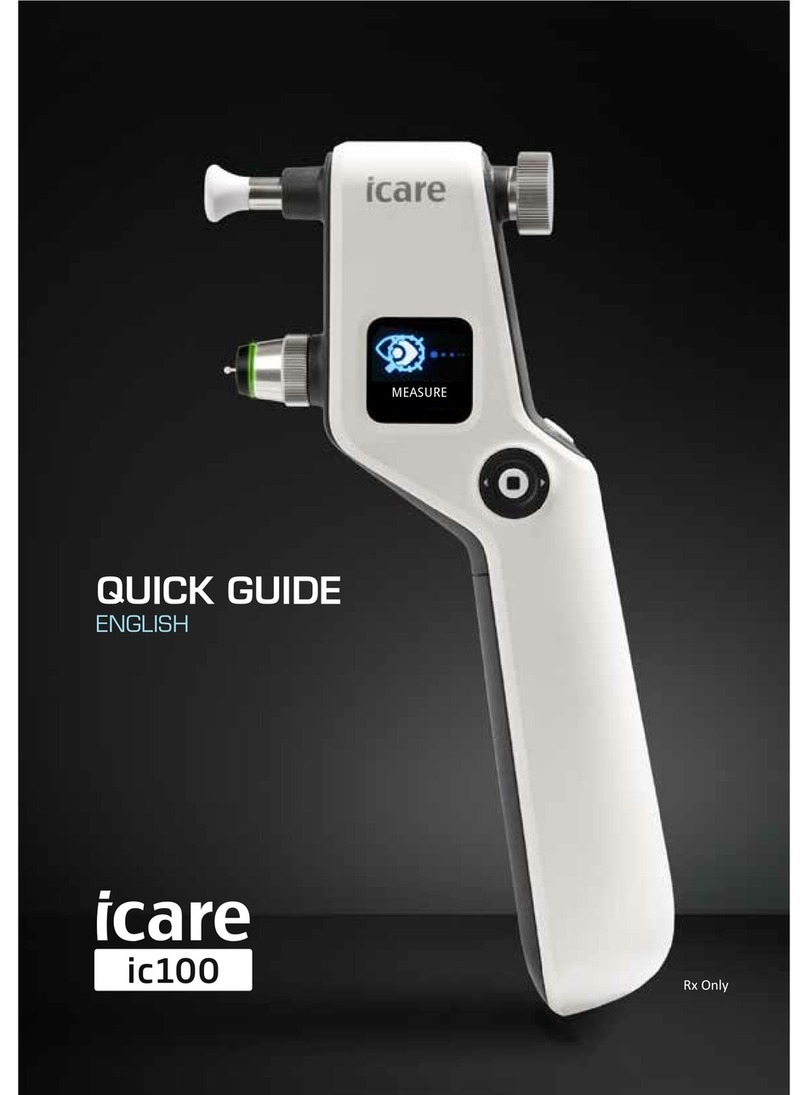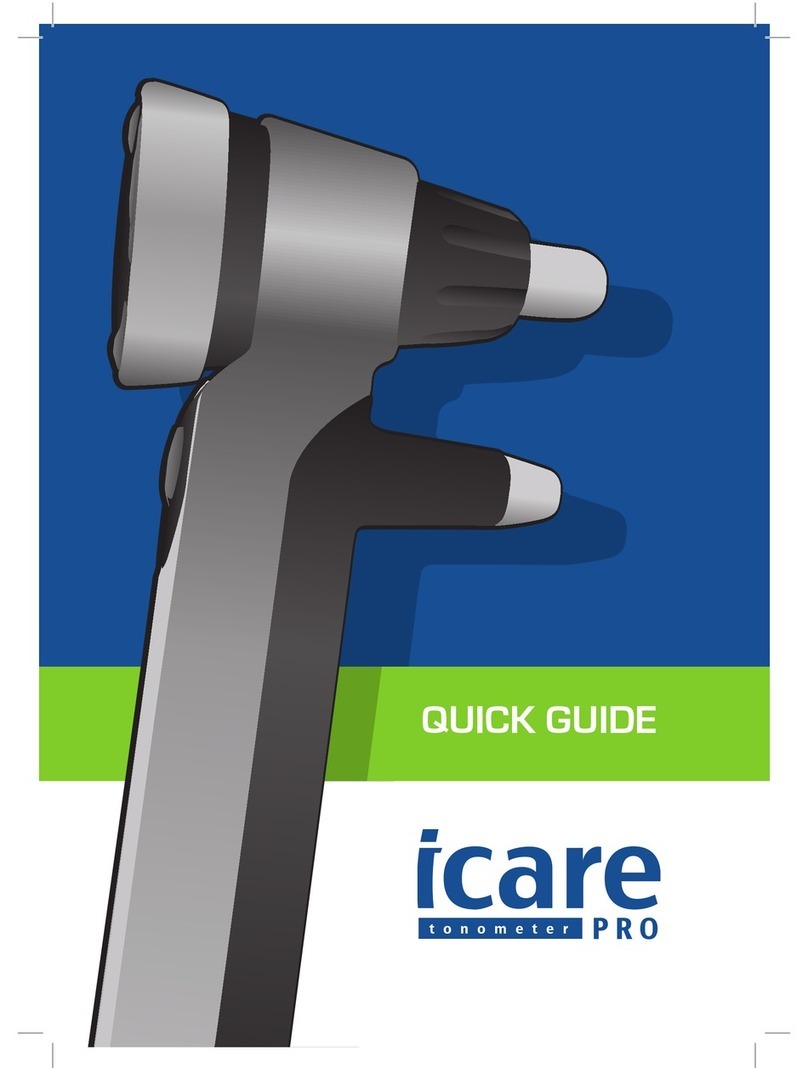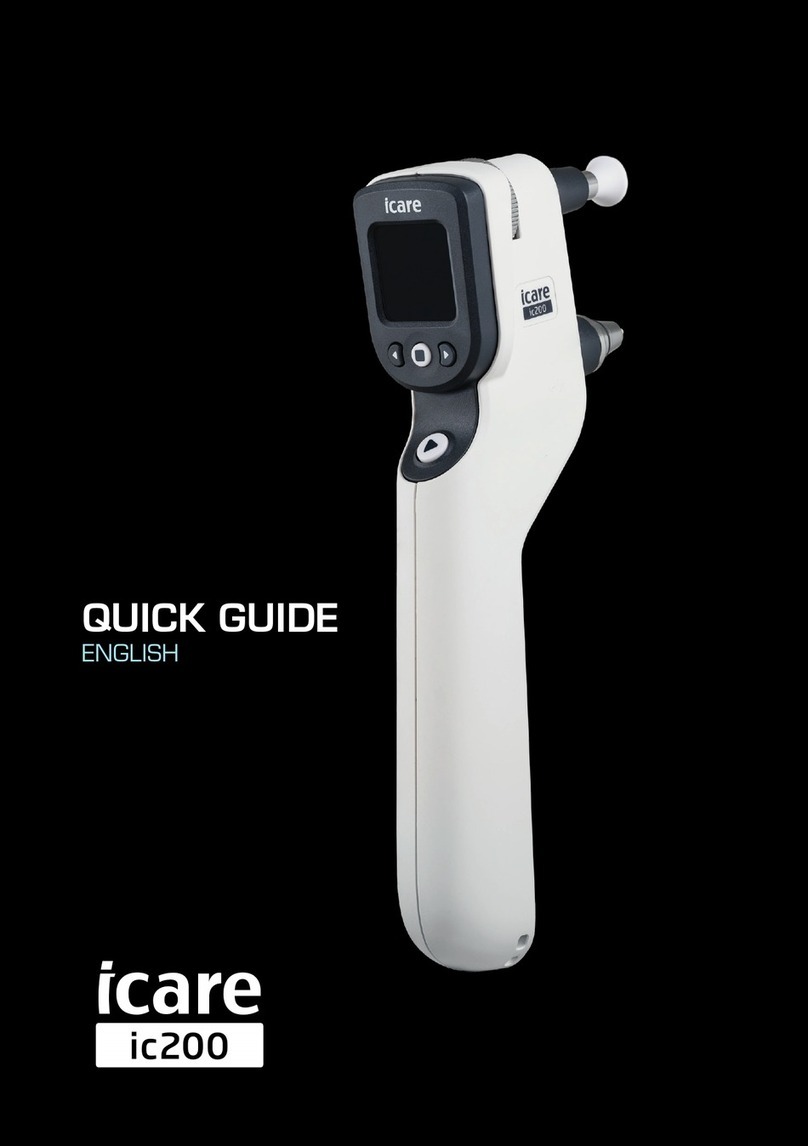
Safety instructions
•Retain this manual for future use.
• When you have opened the package, check for any external damage or faults, particularly for
damage to the case. If you suspect that there is something wrong with the tonometer,
contact the manufacturer or distributor.
• Use the tonometer only for measuring intraocular pressure. Any other use is improper and the
manufacturer cannot be held liable for any damage arising from improper use, or for the conse-
quences thereof.
• Never open the casing of the tonometer, except for the battery compartment or to change the
probe base.
•This manual contains instructions for replacing batteries and changing the probe base.
•Never use the tonometer in wet or damp conditions.
• The probe base, battery compartment cover, screws, collar and probes are so small that a child
could swallow them. Keep the tonometer out of the reach of children.
•Do not use the device near inflammable substances, including inflammable anesthetic agents.
• Prior to each measurement, check that a new disposable probe from an intact package is being used.
•Be sure that the probe contains the small plastic round tip in front.
• Certain microbiological agents (e.g. bacteria) can be transmitted from the forehead support.
To avoid this, the forehead support should be cleaned regularly with a disinfectant, e.g. an alcohol solution.
•The tonometer conforms to EMC requirements (IEC 60101-1-2: 2001), but interference may occur
in it if used near (<1m) a device (such as a cellular phone) causing high-intensity electromagnetic
emissions. Although the tonometer’s own electromagnetic emissions are well below the levels permitted
by the relevant standards, they may cause interference in other, nearby devices, e.g. sensitive sensors.
• If the device is not to be used for a long time, we recommend that you remove its AA batteries,
since they may leak. Removing the batteries will not affect the subsequent functioning of the tonometer.
•Be sure to dispose of the single-use probes properly (e.g. in a container for disposable needles),
because they may contain micro-organisms from the patient.
• Batteries, packaging materials and probe bases must be disposed of according to local regulations.
Federal law (U.S.) restricts this device to sale by or on the order of a physician.
WARNING
The tonometer must not come into contact with the patient’s eyes, except for the probes,
which may do so for a fraction of a second during measurement. Do not bring the tonometer
into contact with the eye or push it into the eye (the tip of the probe should be 4-8mm,
or 1/6 – 1/3 inch, from the eye).
CAUTION
Read this manual carefully, since it contains important information on using and
servicing the tonometer.
CAUTION!
4
ALL manual_icare _A5_100209.indd 4ALL manual_icare _A5_100209.indd 4 2.3.2009 11:06:162.3.2009 11:06:16































